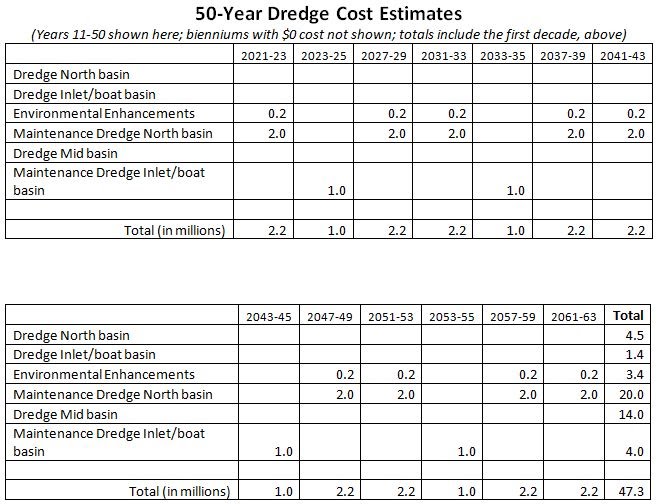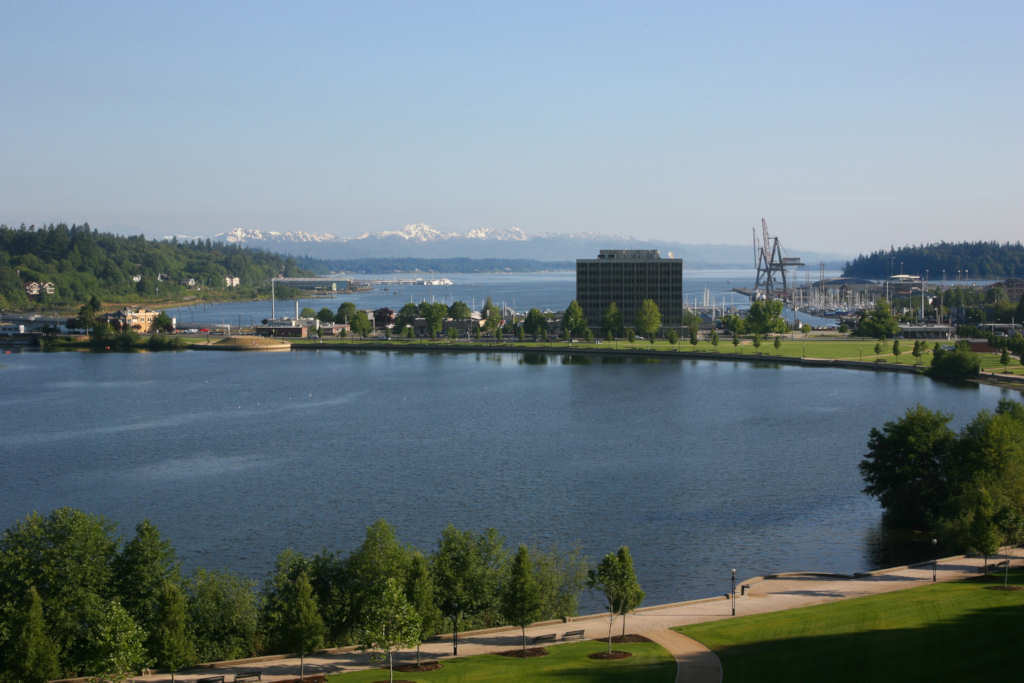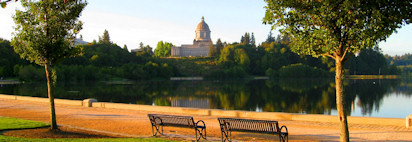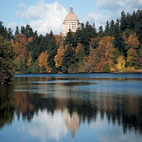Financial Projections - CLIPA White Paper (part 3)
The CLIPA PLAN provides for a two, ten, and fifty year program. The fifty year cost estimate is about $48 million in contrast to the CLAMP Estuary Option which would cost at least $150 million and which has about $100 million in initial infrastructure cost just to get started.
The original CLIPA plan was issued in July 2010 and updated in March 2011.
A key element of the CLIPA PLAN is a public-private partnership with a shared representative Management Board. This new Board would guide the financing and the implementation plans with involvement by the local governments and stakeholders with the most to gain or to loose from the decisions related to the future of Capitol Lake, the waterfront, and the Deschutes Watershed.
Financial Projections – First Biennium
2011-2013 Biennium ($4.5 million)
Based upon a preliminary estimate to be verified in the predesign study, the first biennium’s activities would cost approximately $4.5 million. A capital budget appropriation at this level will finance the predesign, sediment testing for disposal, design, permitting, project administration, and initial interim maintenance dredging of the North basin of Capitol Lake. It is anticipated that this activity will establish the long-term maintenance dredging program and permits. It will also provide the necessary time to bring partners together to develop a Deschutes Watershed plan.
Predesign Elements
Predesign will focus on efforts to maintain the existing lake and the proper disposal of dredged lake sediment. We recommend a new dimension to this effort, in which the predesign study will include performance objectives and strategies to achieve long-term maintenance of Capitol Lake. The identification and quantification of scientifically-based, measurable objectives will then establish and be used as a baseline for future monitoring and public reporting by General Administration (GA) to the Legislature on a five-year cycle, timed to coincide with the expected needs for ongoing maintenance dredging.
For example, elements of the predesign study might include:
- Sediment removal options (for the planned maintenance dredging and future dredging options) For example, by explicitly identifying the lake as a sediment management “trap,” and managed as such, the lake could be completely drained and dredged; it could be dredged using on-land operations; or, it could be dredged through piping out to lower Budd Inlet, and loaded onto a barge.
- Sediment disposal options – sites, transport methods, etc. For example, in any of the options above, the dredging spoils could be moved onto trucks, trains, or barges. The State has the added option of using adjacent upland acreage as a dewatering and storage area. The State would then have time (up until the next dredge, potentially up to 5 years) to market the dredging spoils as fill, potentially reducing or even eliminating the sediment disposal costs. While this might take time for the first dredge due to the contamination of purple loosestrife, future dredges would offer clean fill for landscaping and such. On-site sediment disposal options include using areas such as Percival Cove or adding to the existing wetlands in the southwest corner of the Middle basin which was created by prior dredging spoils.
- Flooding/hydrology studies By explicitly identifying the lake as a vehicle for flood management, such studies might identify optimal contours of the lake, and the extent to which the three lake basins serve in conjunction with other measures to best manage for flood control.
- Schedule and schedule constraints e.g., in-water work scheduled to protect aquatic resources
- Cost factors
- Water quality and overall lake management, including invasive species The lake has not been well managed to anticipate and plan for its overall management as a body of water, nor has an overall watershed-wide plan been developed to utilize the lake features to improve upon overall quality and benefits to the ecosystem and to the community and visitors to the area.
- Habitat restoration Similarly, an overall watershed management approach should incorporate how the particular features of the lake basins and surrounds might be managed for habitat restoration. The predesign study could identify unique habitat provided by the lake and lake environment that might be enhanced, consistent with its location in an urban area connecting the upper Deschutes and lower Budd Inlet.
- Recreation and education/interpretation opportunities Increased opportunities to provide for recreation, as well as informal education and interpretation of the area should be identified. Signage providing historic “stories,” nature interpretation, and connecting the area with the Capitol Campus, along with trail walks, structured “naturescapes,” and other components could further enhance the use and enjoyment of the entire area, linking it more explicitly to the Capitol Campus, Deschutes Watershed, and Budd Inlet.
- Coordination of in-water work activities in lower Budd Inlet (e.g., City of Olympia Boardwalk and Percival Landing, west side development, etc.) Predesign should identify various activities planned by national, state, and local entities in and around the area to align with and support each other’s work, in scope, timing, and coordination.
- Opportunities for partnerships This is discussed in greater detail in CLIPA’s White Paper document.
- Funding strategy (e.g., Federal grants, Public/private partnerships, etc.) For example, the proposed dredge of the lower Budd Inlet should coincide with dredges throughout that basin, with cost sharing among all beneficiaries, including the marinas, yacht club, Port of Olympia, City of Olympia, etc.
Planning and Coordination
Our recommendation is that any planning includes what we deem a necessary step of setting up a Capitol Lake/Deschutes Watershed “coordinating board” of public and private partners. Such a board is intended to provide intentional coordination and collaboration in the management of the Deschutes Watershed, and Capitol Lake's role in water quality and sediment management consistent with maintaining a healthy "lake environment." The coordinating board of public and private partners would oversee and guide the implementation of the plan for long-term sustainability and accountability.
A Water Quality and Sediment Management Plan for Capitol Lake should be a priority. It would identify improvements to and ongoing efforts needed for the long-term management of the Deschutes Watershed under the leadership of the County and the State, along with riparian and stormwater management by the cities and the Department of Transportation. The new “coordinating board” would provide routine reporting to the public on progress towards a healthy Deschutes Watershed and Capitol Lake program.
Maintenance Dredge Considerations
The intent is to obtain Corps of Engineers and State permits to authorize the interim maintenance dredge of about 100,000 cubic yards (cy) of sediment with a list of sites for disposal to be considered and selected in the predesign work. Ongoing routine and scheduled maintenance dredging would be included in the permit process.
A preliminary draft plan was used to develop the attached draft budget for presentation to General Administration and to the Legislature as part of our proposed recommendations. The initial plan anticipates that the North basin of Capitol Lake would be dredged to an average depth of 13 to 15 feet (taking into account sloping bank contouring) and then be maintained at a depth that is consistent with the water quality and sediment management objectives for the lake, along with any other needs further identified during predesign (or future study and reporting).
Long-Term Strategy and Infrastructure
We recommend, and have included in our cost considerations, the incorporation of various strategies that will provide flexibility in the ongoing maintenance of Capitol Lake. Such strategies might include infrastructure needed for future dredges or “leave-behind” transition structures, such as a piping infrastructure at the dam (shown in CLIPA’s Maintenance Plan document) for piping dredges to lower Budd Inlet for barging, as possible options.
Financial Projections – Remaining 10-Year Plan
2013-2015 Biennium ($2.4 million)
The first year of the second biennium would include maintenance dredging of approximately 110,000 cy of sediment in the marine water area between the dam and the Port Turning Basin. (This volume is slightly larger than the initial calculation from our Lake Maintenance Plan document due to approximation rounding.) This would be a joint operation with approximate dredging volumes in each area to be: 10,000 cy City of Olympia; 30,000 cy marinas and Olympia Yacht Club; 70,000 cy General Administration/lake carryover on the western side of lower Budd Inlet due to delayed maintenance dredging.
If completed subsequent to the initial Capitol Lake interim maintenance dredge, the cost for the State portion is estimated to be about $1.4 million for the 70,000 cy. Further analysis may determine that combining this dredging activity with the Capitol Lake North basin maintenance dredge in the second year of the first biennium would create economies of scale and thus cost savings. This might be an option for the Legislature to consider. If delayed much beyond this second biennium, the cost will continue to rise. The remaining costs of the approximately 40,000 cy of sediment beyond the western side of lower Budd Inlet would be paid for through cost sharing of the various public and private groups.
In addition to the estimated $1.4 million for the Budd Inlet dredging, the State request includes $1 million in funds for environmental enhancements and the water quality/sediment management plan implementation which would occur in the 2013-2015 biennium, as well as administrative costs for the coordinating board. Environmental, riparian, park, and trail enhancements would be subject to the location of lake sediment disposal. We recommend some of these funds be made available to the County on a matching grant basis for Deschutes Watershed enhancements specifically targeted toward up-river sediment management, water quality enhancements, and other riparian, wetland, recreation and education enhancements. The State could seek out matching federal funds for these purposes.
2015-2017 Biennium ($200,000)
No new work is anticipated for this biennium. Any unspent funds from the prior biennium, especially from the $1 million enhancement appropriation, may result in a reappropriation to continue and complete the environmental enhancements. $200,000 is requested in this biennium to support ongoing water quality and sediment management monitoring and administrative costs for the coordinating board. Predesign studies in the 2011-2013 biennium could expedite maintenance dredging in the Middle basin of Capitol Lake, or identify other sediment disposal strategies, including recycling of lake sediments for landscaping objectives. Funds might be needed for GA’s efforts in these areas.
2017-2019 Biennium ($2.4 million)
Funding is requested for water quality and sediment management, and maintenance dredging of the North basin. It is estimated that on average 35,000 cy of new sediment settles into Capitol Lake from the Deschutes Watershed annually. We anticipate a 5-year routine maintenance dredging program to address this, requiring another 100,000 cy of sediment removal. Cost estimates of $2.0 million are based on the dredging, pre-planning and permitting that occurred in 2011-2013.
However, it should be noted that any new sediment management techniques utilized upstream in the Deschutes Watershed beginning with the 2013-2015 biennium’s activities stemming from the $1 million request could reduce, perhaps significantly, sediment accumulations into Capitol Lake and either reduce the dredged material volume estimate and associated costs or extend the time period for needed maintenance dredging.
Another $400,000 is requested for continuous improvements to the Deschutes Watershed/Capitol Lake environment, targeting water quality sampling and sediment management along with other needed improvements and enhancements, as well as administrative costs for the coordinating board.
2019-2021 Biennium ($10-14 million)
Maintenance dredging of Capitol Lake’s Middle (“Mid”) basin is recommended for the 2019-2021 biennium, removing an estimated 500,000 to 700,000 cy at $20/cy. The estimate anticipates the Mid basin would be dredged to a depth of 6 feet. This is an option, and one that we strongly recommend. Another option would be the conversion of the southern end of the Mid basin to a freshwater wetland and park area, with trails, interpretive areas, and enhanced habitat. The decision on this will be based on the 2011-2013 Water Quality management studies, the predesign studies, and long-term sediment disposal plan and permitting program.
Note: The first dredge of the Capitol Lake North basin is estimated at $25/cy, due to all of the “unknowns,” while subsequent dredges in the North basin and Middle basin are estimated at $20/cy.

Financial Projections – Remaining 50-Year Plan
2021-2063
Capitol Lake will be managed for water quality, sediment management, habitat, and various multi-purpose uses by the community. The maintenance dredging program anticipates a five-year maintenance dredge of the "sediment trap” in Capitol Lake (North basin) of about 100,000 cy or $2.0 million every five years, with long-term permitting planned in 2011-2013. An additional $200,000 is included every five years for water quality and sediment management research, sampling, monitoring and reporting through the coordinating board. The plan also considers a ten-year cycle for the marine water maintenance dredging between the dam and the Port Turning Basin of about 50,000 cy or $1.0 million.
The plan does not include maintenance dredging for the Mid basin, as that will need to be determined based on the timing of the first dredge, upstream sediment management, and other considerations. The plan also does not include costs of dredging the South basin. We advocate for that work, believing it might best be done in the second decade. However, there is much to consider in these cost estimates, beyond the information we presently have available. We recommend the predesign study consider these activities and their costs as potential options in the out-going years after the first decade.
Subject to the water quality management objectives and the ability to manage sediment upstream, the amount of sediment removal should continue to be reduced, reducing overall costs and extending the timing of dredges. The cost estimate of $20/cy is used with the premise that the long-term maintenance and permitting issues would be addressed in 2011-2013. The total cost of this 40-year span (years 11 – 50) would be about $18.0 million for the lake, $1.8 million for environmental monitoring and enhancement, and $4.0 million for the marina/small boating area of lower Budd Inlet.
Summary
The 50-year cost of this program is anticipated to range from about $43.3 to $47.3 million using the above assumptions and estimates. The assumptions include the accepted State approach for some contingency budgeted. A more rigorous long-term budget will be verified after the predesign studies and permitting program, which provides for routine maintenance dredging, are outlined and negotiated.
As part of the coordinating board’s work in the first few years, a cost sharing approach should be identified and implemented to ensure that the entire lower Budd Inlet boat basin dredging occurs simultaneously, and thereafter the maintenance dredges reflect a cost sharing in an equitable manner by the State, City, Port, marinas, and Yacht Club. For example, the marinas and Yacht Club pay the State for lease costs (funds are deposited in the Aquatic Lands Enhancement Account), and these funds could be appropriated by the State to partially fund some of the coordinating board’s ongoing activities.

Additional Finance Cost Tables
Financial Projections- CLIPA White Paper (part 3)
by: CLIPA Capitol Lake Improvement & Protection Assn.Financial Projections for How to Manage Capitol Lake for Future Generations. Part 3 of the CLIPA White Paper


